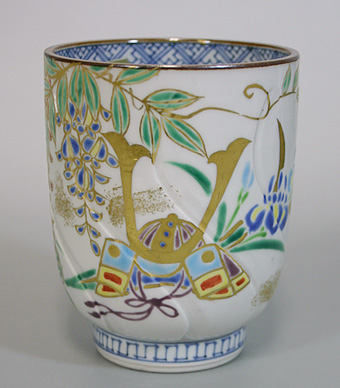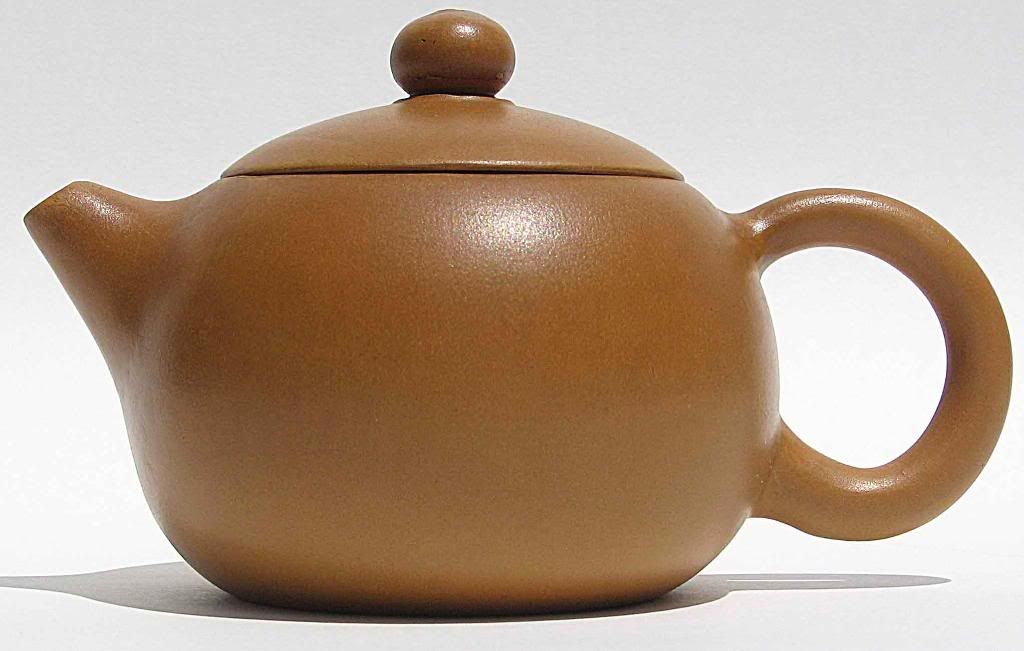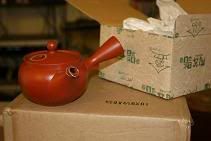Wow, that's a beautiful yunomi!britt wrote:Chamekke- thanks for answering a question that I never actually asked. I recently saw a Kyo-yaki tea cup added to a vendor's web-store in celebration of Boy's Day. It had a very cool samurai helmet painted on the cup, along with three types of flowers. When I saw it I asked myself, "why do they always screw up these male themes by adding flowers to them?" Now I know why.chamekke wrote:However, it still focuses on male symbols and the traits traditionally associated with maleness (the kabuto or samurai helmet; the iris and its leaves, which are said to resemble sword blades;
Although I didn't know the difference between the three types of flowers before, after your comparison of the Iris to sword blades it's easy to pick out the Iris, and yes, they do mimic sword blades quite well.
My impression is that the Japanese don't think of flowers as necessarily "feminine" in the way that we Westerners tend to. And in the case of the iris, the flower really is decidedly "masculine". (On Children's Day, kiddies often engage in "swordplay" with iris leaves.) I'm assuming your cup includes wisteria simply because it also blooms in May. The third flower (not visible in this photo, but you can see it on the original webpage) is hydrangea, which I guess is really a late-May flower - usually more associated with June actually. So the selection of the last two is probably purely seasonal.
There are several folk beliefs to do with the iris, or shobu. I'm going to be lazy and quote yet another webpage rather than trying to paraphrase from memory. Hopefully people won't mind me sliding off topic for the umpteenth time:
Edited to add:Shobu, the Japanese iris, the long narrow leaf of which is somewhat like a sword in shape, has always been closely associated with the Boys' Festival. The iris leaf is prominent in the observance of Tango-no-Sekku because the sound of the word Shobu, although written with different characters, implies striving for success.
On May 5, the Japanese steep the leaves in hot water and enjoy the fragrant Shobu-yu (iris hot-bath) because of the traditional belief that the iris bath is a miraculous prophylactic against all kinds of sickness. Many public bath houses, particularly in the districts where the people are less affected by western influence and are accustomed to taking hot baths in the morning, open their doors early in the morning on May 4 and 5.
Also for the festival, finely chopped iris leaves are mixed with Sake to produce a drink (Shobu-sake) especially enjoyed by the Samurai of old.
In ancient times, iris leaves were also believed to have the mysterious power of extinguishing fire and for this reason, in rural areas today, people still observe the custom of putting iris leaves on the eaves of their houses on May 5 as a talisman against the possible outbreak of a fire or presence of evil spirits.
P.S. On Boys' Day it's traditional to include either a kabuto by itself, or a "warrior doll" (musha-ningyo) as part of the display. The doll may portray a male samurai in full armour, or one of the boy-heroes of folklore, such as Kintaro. All the figures are male except for one - the (legendary) Empress Jingu, who was said to have donned her dead husband's armour to successfully complete his military campaign in Korea. She is usually shown wearing her armour, while her elderly general Takenouchi - who holds her infant son, the future emperor Ojin - stands at her side. There's a very nice Empress Jingu doll here on Trocadero.
For more on Boys' Day and its symbolism, including even more details on the iris, see this great article on the website L'Asie Exotique.
Sorry to go on at such length, but I do love this stuff...













